Norton St Philip is an attractive historic village in Somerset, just a short bus or car journey from Bath. In the seventeenth century the village was the site of a battle during the Monmouth Rebellion (more on this below). Nowadays it is a pleasant place to wander, and to enjoy a meal in one of the village’s two historic pubs.
The George Inn at Norton St Philip
The most well-known landmark in Norton St Philip is the George Inn on the High Street. One of the oldest inns in the country, the George has existed for 700 years. The Duke of Monmouth used the building as his headquarters in the village after his rebels retreated from Bath in June 1685. The character-filled, rambling interior contains many original features and secrets – investigations during restoration work in 1998 uncovered 16th-century wall paintings, as well as reconstructing the building’s history (read a full report on the conservation work). Various films have shot scenes here, including The Remains of the Day and a TV adaptation of Defoe’s Moll Flanders.
The pub has an idyllic garden that I think must be among the finest in the country: on a terrace looking across the village green towards the historic church and the countryside around. I’ve sat here drinking cider in the sunshine as a cricket match is played on the green below, and think it would be hard to find any scene as perfect or as English. (Although viewing a battle re-enactment by enthusiasts here comes a close second). The inn serves meals and also offers accommodation, for those wanting to soak up the historic atmosphere.
Around the village
Norton St Philip is a substantial village, and is growing further, with new housing being built around the fringes of the historic centre. One new housing estate, Fortescue Fields, has architectural aspirations, aiming for a kind of harmonious update of traditional styles, with lots of curves – it’s an interesting experiment to look at.
The reason for Norton St Philip being a popular place to live now is probably due to its travel connections, as residents can easily commute to work in nearby towns. The useful Bath-Frome road though, has its drawbacks – it runs through the village, as the High Street, and the busy flow of traffic along the narrow road lined with parked cars can detract at times from the otherwise peaceful atmosphere.
Over the road from the George is another historic pub, the Fleur-de-Lys, under the same ownership. The Farleigh Road Farm Shop, a mile away, has a café which is another option for daytime food, and there is also a Co-op food store in the village.
It’s worth spending half an hour exploring the village’s few streets, and admiring its many handsome historic cottages and terraces. The village church, which forms part of the attractive view from the garden of the George, contains some interesting early tombs. Between the High Street and church lies Church Mead, a large green used for village fairs and cricket. The green, and a small children’s playground, can be reached down the winding alley next to the George.
Footpaths run through the village, between cottage gardens and walls hung with roses, and out into the attractive green countryside beyond. I’ve walked between Norton St Philip and the southern edge of Bath, an attractive route leading across fields and parkland and through woods, via the villages of Hinton Charterhouse, Limpley Stoke and Monkton Combe. The village’s position on the Bath-Frome bus route is very convenient for walkers, allowing you to enjoy a linear walk and return by bus, or hop off the bus to walk from other villages along the route.
Choosing Norton St Philip as the base for a holiday or weekend break gives you the advantages of a village setting and rural surroundings but also easy public transport and car access to Bath and Frome for sightseeing, shopping, museums and meals out. It also makes a good stop on a touring holiday, for a relaxing night in the countryside.
Travel
Norton St Philip is six miles south of Bath, on the B3110 between Bath and Frome. It can be reached on the Bath – Frome bus service operated by First, the D2. This runs generally every 30 minutes Monday-Saturday daytimes; less often in the evenings and on Sundays (see First Bus timetables). The bus stops by the Fleur-de-Lys, and the journey to/from Bath bus station takes around 20 minutes.
Accommodation in Norton St Philip
If you want to spend a night or two in the countryside outside Bath, there are a few options in Norton St Philip and close by.
- The George Inn – the most obvious, and atmospheric, place to stay is the famous inn. It has individual, historic bedrooms in the inn itself (including two with four-poster beds) and in the 16th-century guest house opposite, The Plaine.
- Lower Haven Farm – a farm stay ¾ mile outside the village, on the Farleigh Road (note there’s no pavement).
- Ida’s Nook – a cute little garden apartment in the village near the church (sleeps 2).
- Norwell View Farm Glamping – for something a bit different, you could try these wooden pods (one is a cabin on stilts) in a field nearby. Read the reviews first to know what to expect.
History
In the Middle Ages Norton St Philip was the site of a wool fair and a destination for cloth merchants. Wool was an important industry in this area, and local trades included weaving and spinning. The village made its greatest mark in the history books in 1685, during the uprising led by the Duke of Monmouth, illegitimate son of King Charles II. After landing at Lyme Regis, Monmouth gathered West Country support for his claim to the throne, fighting several battles against the forces of King James before his eventual defeat at the Battle of Sedgemoor. A skirmish here at Norton St Philip between the two armies was the last victory for Monmouth’s rebels. The event is remembered locally in street and house names – look out for Rebellion Corner and Monmouth Paddock. The photos below show a 2005 re-enactment by the Sealed Knot which commemorated the 320th anniversary of the uprising.
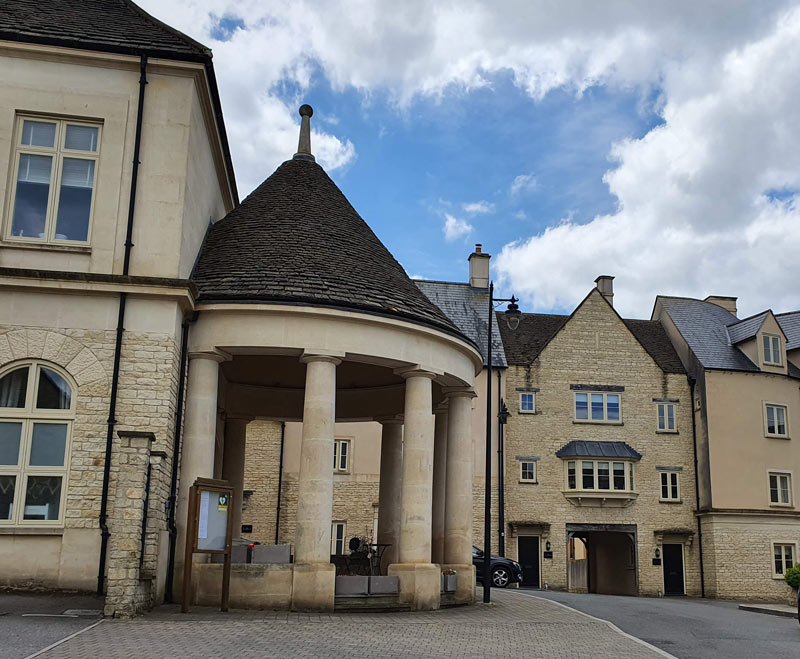
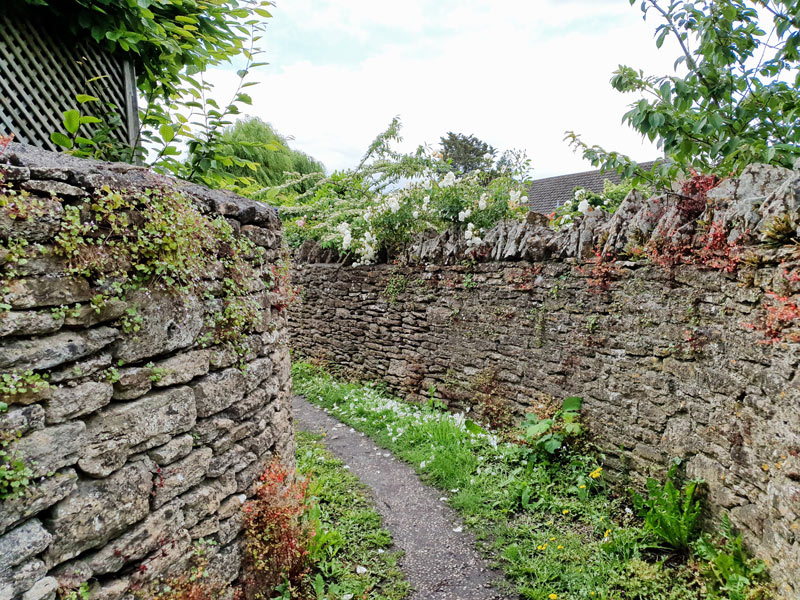
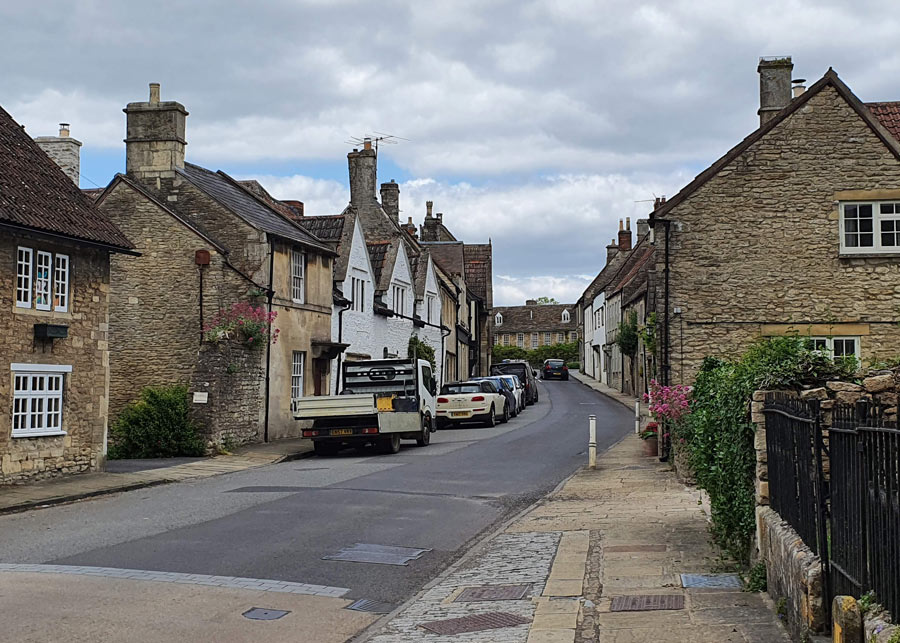
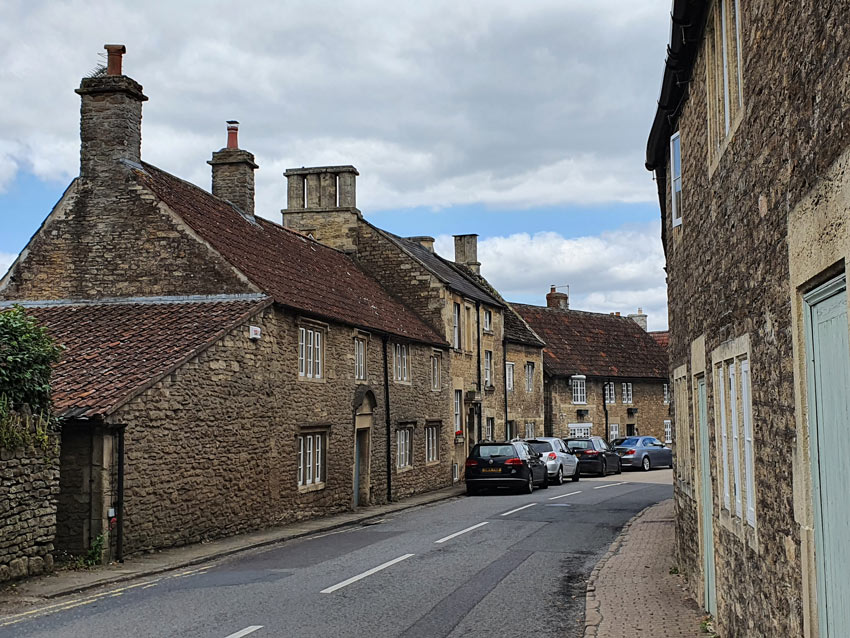
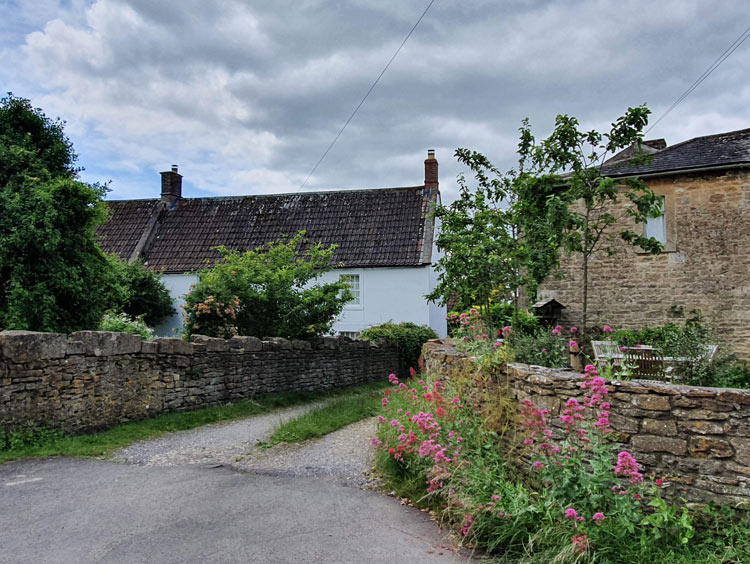
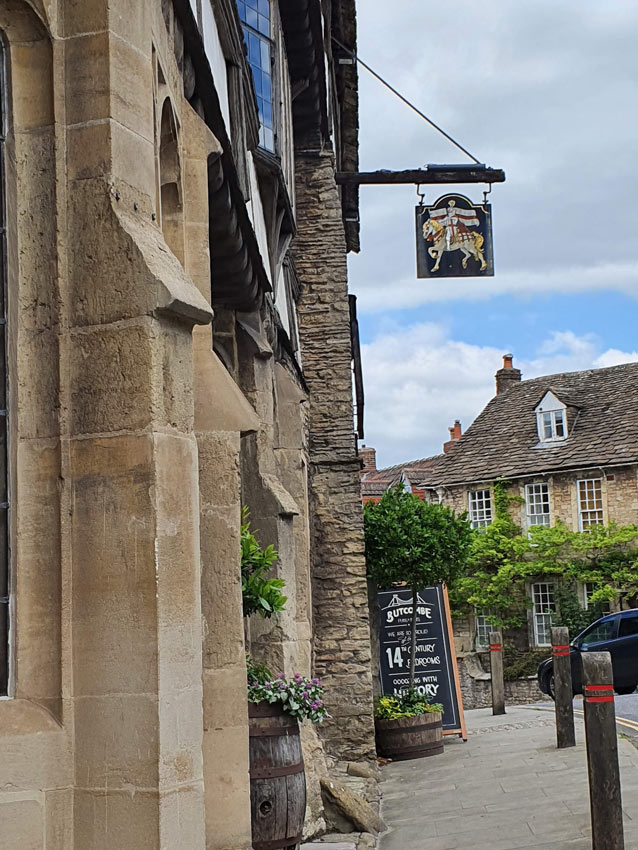

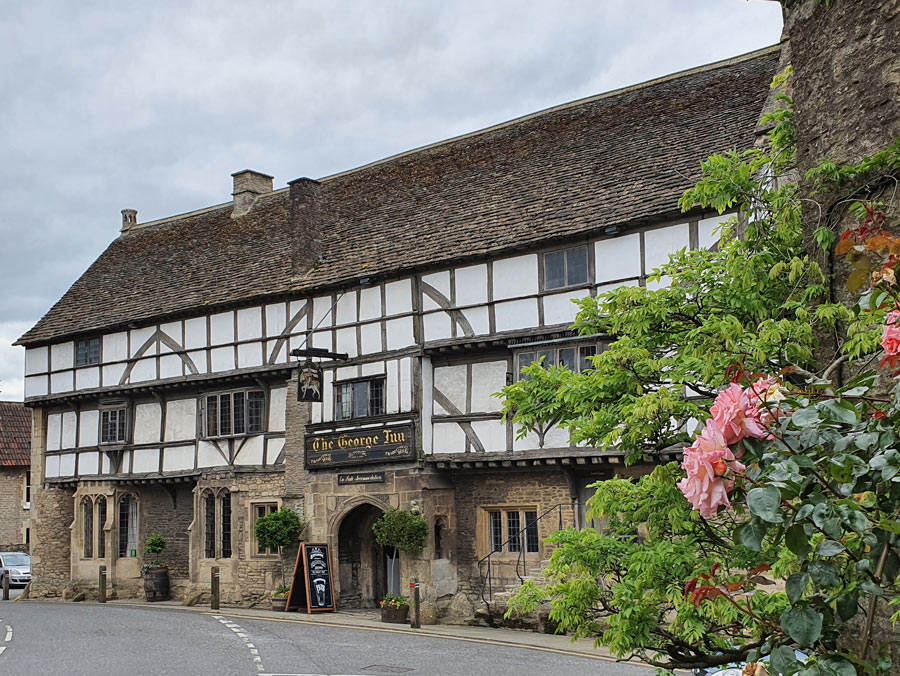
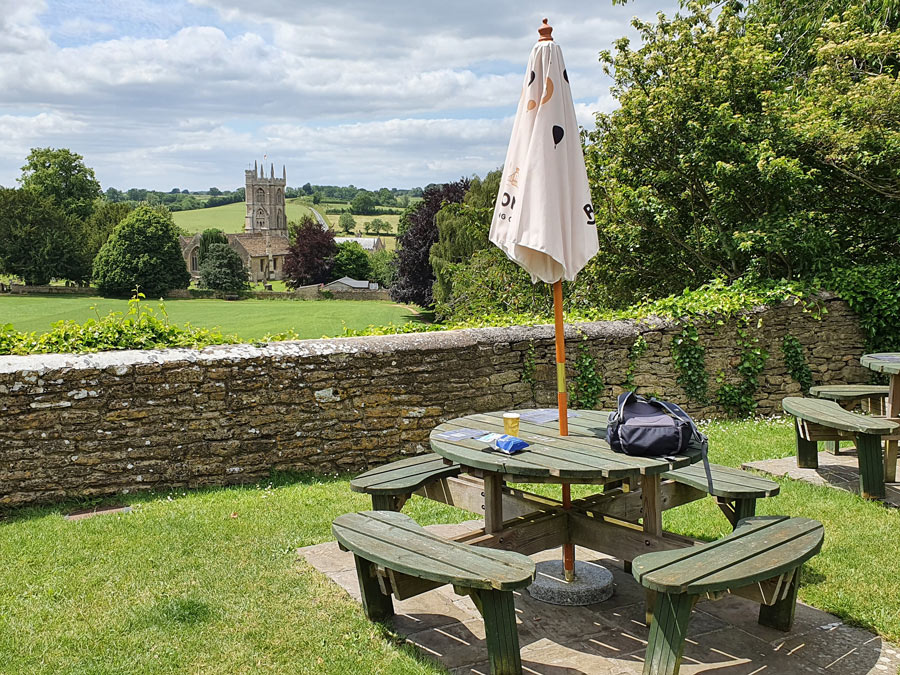
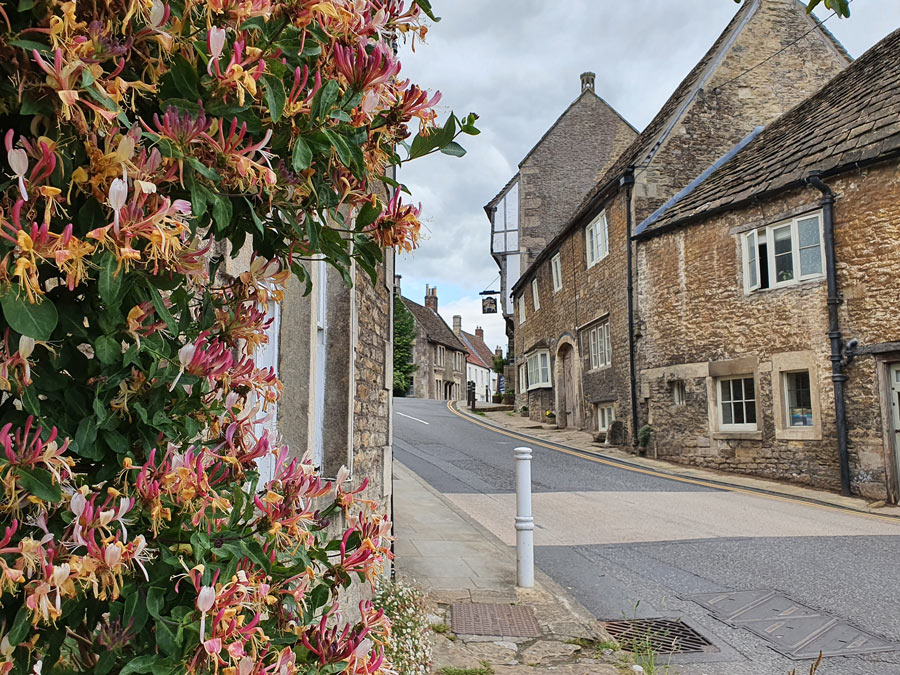
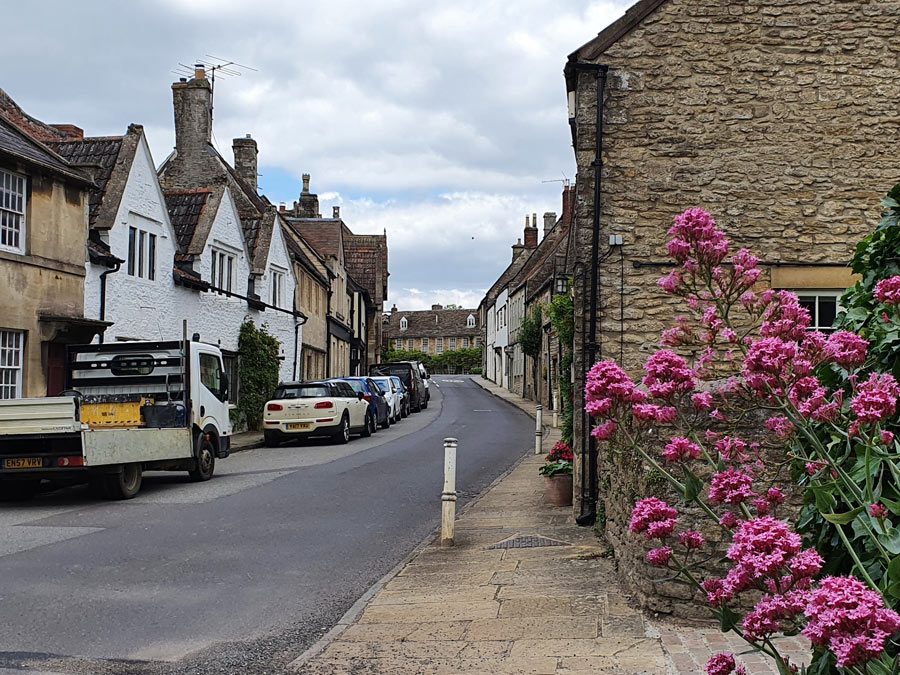
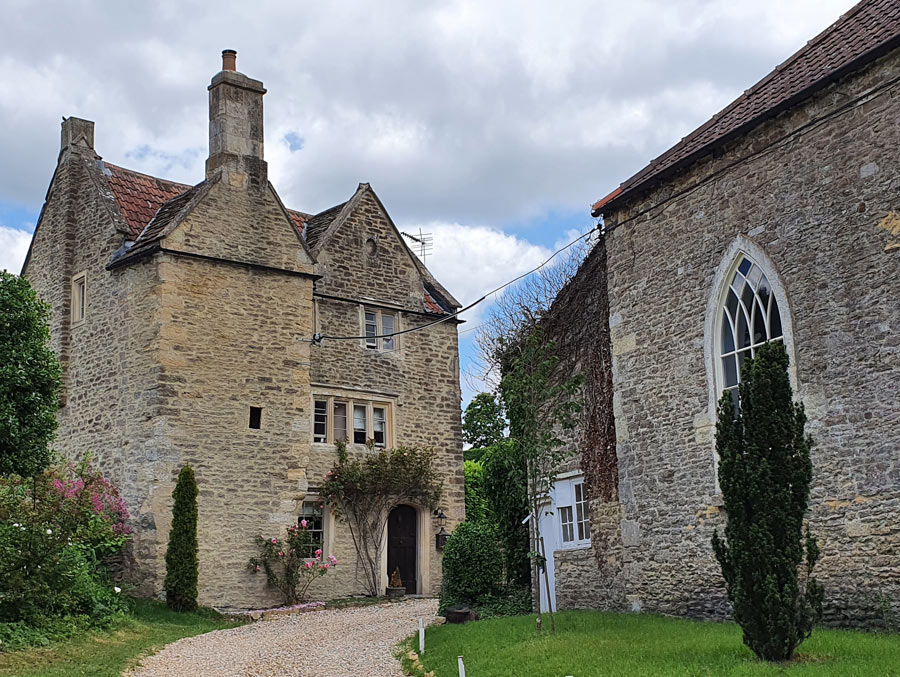
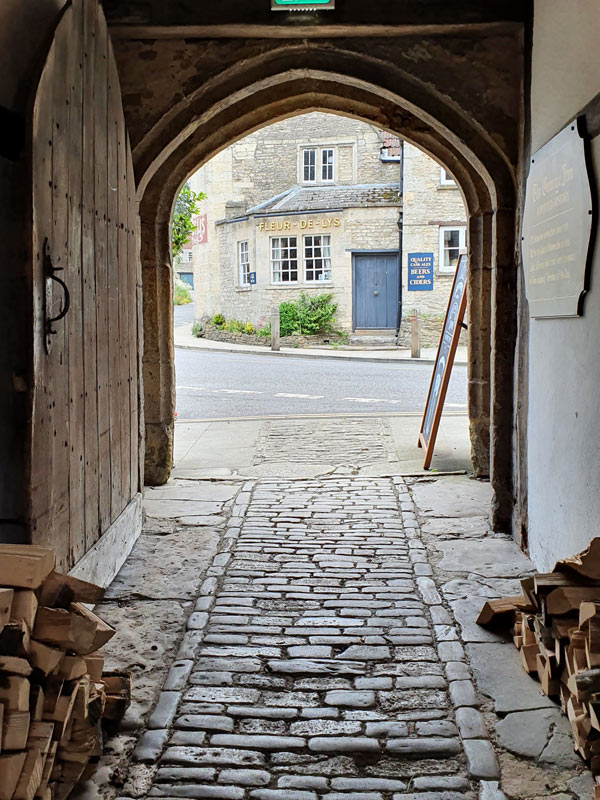
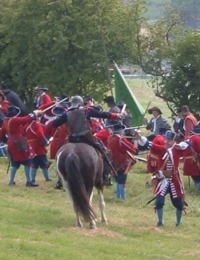
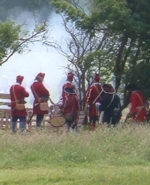 Battle re-enactment at Norton St Philip
Battle re-enactment at Norton St Philip